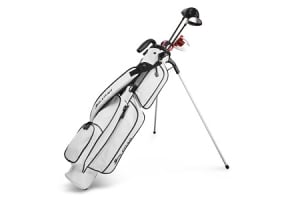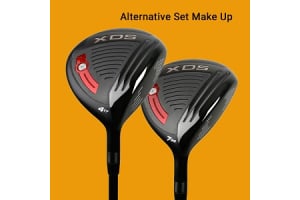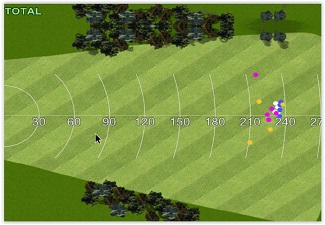
In a data-driven world, serious golfers need to know their numbers. On the course, final score relative to par, number of putts, fairways hits and greens in regulation are key to evaluating your game and looking for what to improve upon. Equally important, improvement occurs off the course. No amount of practice can overcome ill-fitted equipment that is dragging down a golfer’s potential. That golfer needs to master their numbers to obtain a set of fitted golf clubs and this is where a portable launch monitor comes into play.
What does a launch monitor measure?
The most important data a launch monitor can measure is how far the golfer hits the ball with a club and then check if there are any abnormal distance gaps or spot where two clubs in the bag may hit the ball nearly the same distance (a big no-no). Sure, a golfer may also want to know other factors such as club head speed, ball speed, ball height, spin rate, their smash factor and direction relative to their target. Therefore, there are portable launch monitors in every budget category to gather the right amount of information based on the golfer’s needs.
Who can benefit from a portable launch monitor
 The simple answer is everyone. If you are an elite golfer that absolutely needs to know whether you are carrying your #7-iron 171 or 173 yards, that golfer will likely want a launch monitor with all the bells and whistles which may cost close to $20K or more. If you are a fitting studio or custom club fitter that is working indoors, you will need a reliable launch monitor to service your customers. However, for the bogey golfer striving to reach a single digit handicap, may need only the basic data points and can be perfectly happy with a portable launch monitor under $500.
The simple answer is everyone. If you are an elite golfer that absolutely needs to know whether you are carrying your #7-iron 171 or 173 yards, that golfer will likely want a launch monitor with all the bells and whistles which may cost close to $20K or more. If you are a fitting studio or custom club fitter that is working indoors, you will need a reliable launch monitor to service your customers. However, for the bogey golfer striving to reach a single digit handicap, may need only the basic data points and can be perfectly happy with a portable launch monitor under $500.
Are there different types of launch monitors?
The most familiar golf launch monitor is also the most expensive. TrackMan™ operates off Doppler radar which is the same technology that is used in military applications for tracking projectiles and missiles. How it works is the Doppler radar continuously transmits radio signals. When these signals bounce off a moving object, they experience a change in frequency and then translated into a velocity. By using multiple receivers, the system can measure the exact 3-dimensional positions during the entire ball flight in real time as well as gather important information about golfer and golf club in the swing.
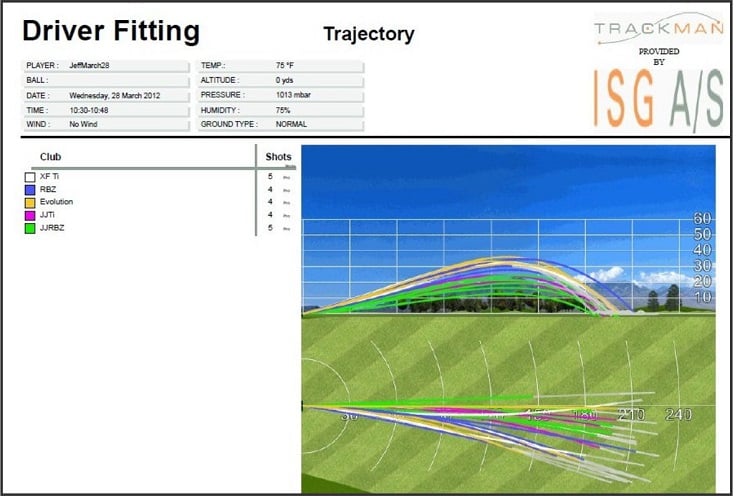
Besides the TrackMan, there are other Doppler based launch monitors with 3D radar units providing the most accurate data compared to 2-dimensional radar. In addition, some of less expensive Doppler models will not track the entire ball flight.
Another type of launch monitor uses high-speed cameras and capture images right after impact has been made. The audible impact with the ball will trigger the unit to shoot images of the ball to be able to measure the initial spin rates, velocity and launch angle. Advanced algorithms will then calculate the direction (left, right, straight) and the distance the ball will land. As opposed to Doppler based launch monitors, a camera-based launch monitor does not track the full flight but can do a superior job of tracking spin measurements.
In what situation do you use a launch monitor?
There are many brands of portable launch monitors on the market today. Most have software available to compare club results and to help pinpoint the performance difference between clubs or specifications such as the optimum driver loft or adapter setting. If you are looking for a new driver or shaft to outperform what you currently have, seek a facility that uses a launch monitor. I am fortunate enough to have access to a TrackMan and I will use it to evaluate clubhead designs or shafts as part of product development.
On the other hand, there are days I am just as content going to the end of the driving range with my Swing Caddie to hit balls and give me the basics (distance, club head and ball speed). I can easily watch the ball flight relative to my target on the range, I just can’t pinpoint distances. You can also call these a personal launch monitor. I am not necessarily going out to fit other people, but if I take out a handful of test clubs I can easily evaluate and see which is best for me. Or if I don’t have nice even distance increments between my irons and wedges, I can adjust the lofts accordingly.
Additional thoughts on launch monitors
If you are purchasing a launch monitor for fitting, get the most usage out of your investment. By hitting various combinations of heads and shafts you or a customer can easily get caught up in the launch and spin numbers. While you are paying attention to those figures, don’t forget about ball direction and solidness of contact on the face. This is especially true indoors where someone will be hitting into a net, and you must rely on the computer screen to show you the direction of the ball.
In terms of direction, a pull will almost always create a lower launch / spin and possibly more distance. Sadly, many customers won’t pay any attention to all the data except which one gives them the most distance. In those cases, make sure the ball is going relatively straight and the landing area is consistent.
If you are using a launch monitor for personal use, I would suggest carrying a small 4” x 6” spiral notebook with you to write down information. Yes, the launch monitor will store and average out data. But if there is something small you did that you saw a spike in distance or a positive change in launch angle (like ball position), you want to write it down when it is fresh in your mind.
One word of caution, if you use a launch monitor to measure launch and spin, any demo tape (also called face or impact tape) applied to the clubface can give you some erroneous readings when hitting a ball.
What is “Smash Factor”?
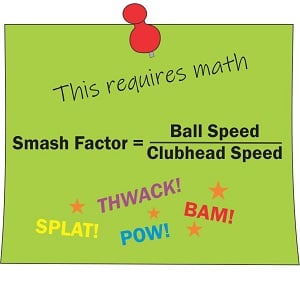 Most of the launch monitors on the market provide what is called a Smash Factor reading. Smash Factor is simply a relationship between ball speed and clubhead speed. For example, if ball speed coming off the face is 146 mph and the swing speed at impact was 100, then the smash factor is 1.46. Or if the ball speed is 130 mph and swing speed at impact is 92 mph, the smash factor is 1.41. The higher the smash factor the better contact is being made.
Most of the launch monitors on the market provide what is called a Smash Factor reading. Smash Factor is simply a relationship between ball speed and clubhead speed. For example, if ball speed coming off the face is 146 mph and the swing speed at impact was 100, then the smash factor is 1.46. Or if the ball speed is 130 mph and swing speed at impact is 92 mph, the smash factor is 1.41. The higher the smash factor the better contact is being made.
Do you need an app?
Some mobile launch monitors hook up with Bluetooth to give you audible distance readings or keep track of your shots. Other units are self-contained, and all the data is featured on the screen. Some apps will also capture video to along with displaying your stats to make the most of your practice time.
Can you use a launch monitor indoors?
Launch monitors are designed to be used both indoors and out and the reason they are portable. However, there may be restrictions for how far the ball must travel to be accurate when using indoors. These are ideal for retail locations and those that live in the northern climes to hit balls indoors year long.
Swing Caddie launch monitors now available at Hireko Golf
Hireko is proud to offer the Swing Caddie line of affordable launch monitors (under $500). They are extremely easy to set up and use right out of the box. These are great for recreational golfers looking to measure their distances and help improve your game. Let’s look at the two portable launch monitors which both operate off Doppler radar.
Swing Caddie SC200 Plus
The SC200 Plus is a self-contained launch monitor so no app is required; everything is displayed on the LCD screen. It is pocket-sized or about the same size as a Smartphone and comes with a remote to change the club settings and which mode you are in (practice, target, and swing modes). Set the unit level four to five feet behind the ball toward your target line and away you go.
Swing Caddie SC300i
The SC300i is the upgraded version and offers more features. It is about the same length but wider than a smartphone. There is an app available to provide more features such as spin data and a video playback, but you can operate this unit without one. For the small difference of price versus the SC200 Plus, you get a lot of bang for your buck. Below is a comparison of what each launch monitor measures.
 |
 |
|
| Feature | SC300i | SC200 Plus |
| Carry Distance | √ | √ |
| Total Distance | √ | |
| Smash Factor | √ | √ |
| Swing Speed | √ | √ |
| Ball Speed | √ | √ |
| Launch Angle | √ | |
| Apex (Maximum Height) | √ | |
| Spin Data | now available via App |
 A Swing Caddie launch monitor will be something that you will always take with you anytime practice or want to evaluate equipment. If you are investing in a Swing Caddie launch monitor for home or to take with you to the range, consider getting the matching pouch as well as those are sold separately.
A Swing Caddie launch monitor will be something that you will always take with you anytime practice or want to evaluate equipment. If you are investing in a Swing Caddie launch monitor for home or to take with you to the range, consider getting the matching pouch as well as those are sold separately.


